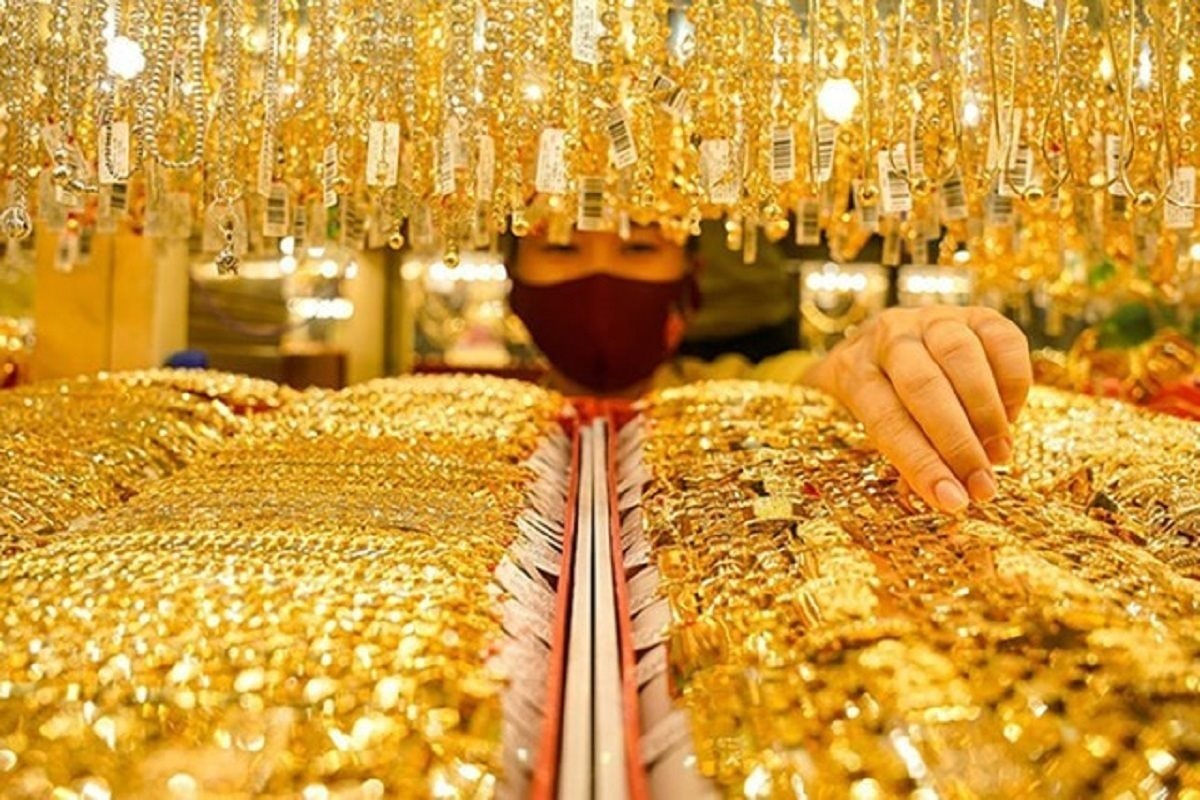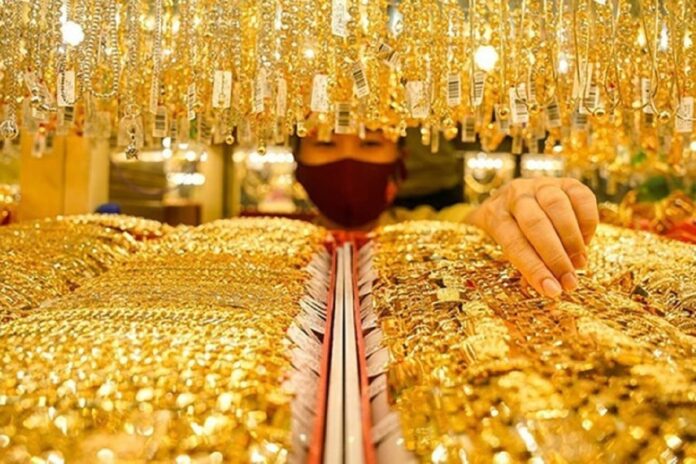On April 25, gold prices dropped by nearly 2%, falling to around $3,318.76 per ounce. This decline came on the heels of US President Donald Trump’s retreat from his threat to fire Federal Reserve Chairman Jerome Powell and hints of potential progress in trade negotiations with China.
But a twist emerged just days earlier — gold prices had surged to an all-time high of $3,500 per ounce, fueled by economic uncertainties and new US import tariffs. So, what’s driving these wild swings?

Why Did Gold Prices Retreat After Hitting Record Highs?
In early April 2025, President Trump sent shockwaves through global markets by imposing a 10% tariff on all imports into the US. This prompted investors to flock to gold as a safe-haven asset, pushing prices to an unprecedented $3,500 per ounce.
However, the situation soon de-escalated. As President Trump softened his tone and abandoned plans to fire Fed Chairman Jerome Powell, market pressures eased. Investors felt reassured and withdrew from gold, returning to riskier assets like stocks. This shift caused gold prices to drop by nearly 2%, falling to $3,318.
Gold Price Trends in 2025
Several prominent financial institutions have made bold predictions about gold prices, and surprisingly, most of them are optimistic.
Citi Research adjusted its three-month gold price target to $3,500 per ounce, up from $3,200 previously, due to strong gold buying from Chinese insurance companies and safe-haven flows amid tariff risks and weak markets.
Goldman Sachs raised its forecast for gold prices by the end of 2025 to $3,700 per ounce, up from $3,300 previously, with an expected range of $3,650–$3,950 per ounce. The bank attributed this to stronger-than-expected central bank gold purchases and increased inflows into ETF funds due to recession risks.
JP Morgan went even further, predicting an average gold price of $3,675 per ounce in Q4 2025, surging past $4,000 per ounce in Q2 2026. The bank also noted that risks could push prices beyond forecasts sooner if actual demand exceeds expectations. This is due to concerns about a global recession and persistent inflation.
According to CoinCodex, gold prices could peak at approximately $4,147.95 per ounce in December 2025, with an average price of $3,569.97 per ounce for the year.
These predictions aren’t random guesses; they’re based on fundamental factors such as interest rates, geopolitical risks, and massive gold purchases by central banks:
First, interest rates significantly influence gold prices. When interest rates decline, gold prices tend to rise because gold doesn’t pay interest. In the absence of more attractive income-generating alternatives, investors tend to hold more gold. With both the US and China expected to cut rates by the end of the year, this could boost gold demand. This is one of the primary reasons analysts are bullish on gold’s prospects.
Second, geopolitical risks. Gold is a safe-haven asset. During military conflicts, political unrest, coups, trade wars, or diplomatic crises, global investors tend to pull money out of risky assets (like stocks) and funnel it into gold to preserve their wealth. In times of geopolitical tension, institutional investors (like hedge funds and central banks) increase their gold reserves as part of their asset protection strategy.
Third, central bank gold demand in 2025. Central banks, particularly in emerging markets like China and India, are quietly ramping up their gold reserves. They do this to reduce their dependence on the US dollar and safeguard their economies against future global shocks.
This consistent demand has provided a strong support level for gold prices, preventing a collapse even during short-term dips. As long as central banks continue to buy, gold will always have a “safety net.”
What Risks Could Hinder Gold’s Price Rise?
Despite the seemingly positive forecasts for gold prices in USD, there are a few warning signs to watch out for:
– A faster-than-expected economic recovery could redirect funds back into stocks, diminishing gold’s appeal.
– If central banks suddenly stop buying gold, demand could fall short and prices could drop.
– Unexpected interest rate hikes instead of cuts could put downward pressure on gold prices.
Nevertheless, most experts remain confident that gold is poised for a bright 2025.
In summary, gold is dancing to the tune of global politics, central bank policies, and significant economic news.
As of now, gold is hovering around $3,318 per ounce, but according to forecasts from Goldman Sachs, Citi, and JP Morgan, it could reach or surpass the $4,000 mark by the end of 2025.
The message is clear: keep a close eye on interest rates, central bank moves, and global political developments. Gold prices may not rise in a straight line, but the long-term trend appears positive, with real-world data supporting this outlook.
The Global Economic Imprint: Week of May 5-11, 2025: US-China Talks Begin, Fed Cautious on Rates.
The global trade war witnessed a positive shift last week as the US struck a deal with the UK and initiated negotiations with China.





















